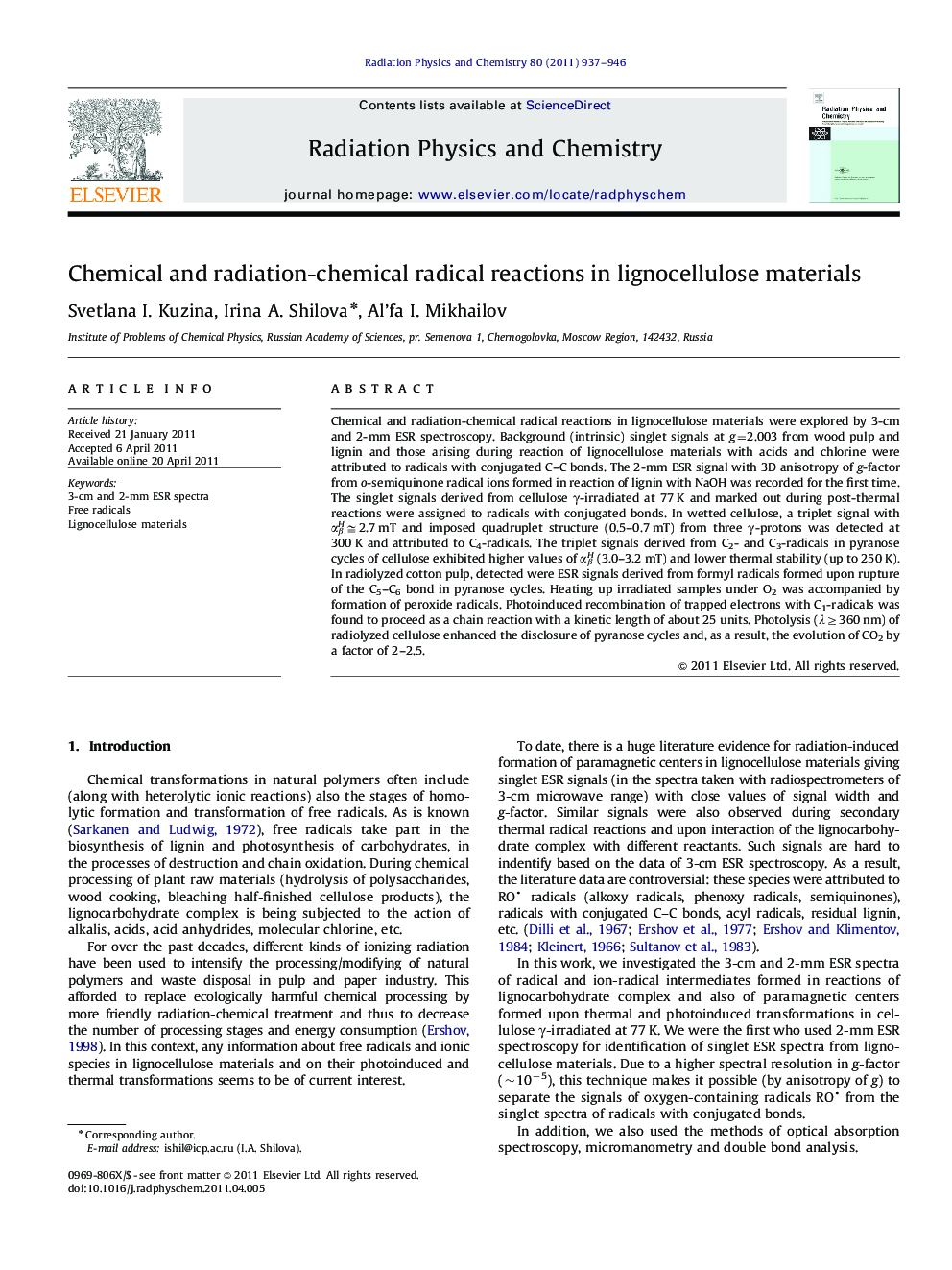| Article ID | Journal | Published Year | Pages | File Type |
|---|---|---|---|---|
| 1884292 | Radiation Physics and Chemistry | 2011 | 10 Pages |
Abstract
Chemical and radiation-chemical radical reactions in lignocellulose materials were explored by 3-cm and 2-mm ESR spectroscopy. Background (intrinsic) singlet signals at g=2.003 from wood pulp and lignin and those arising during reaction of lignocellulose materials with acids and chlorine were attributed to radicals with conjugated Cî¸C bonds. The 2-mm ESR signal with 3D anisotropy of g-factor from o-semiquinone radical ions formed in reaction of lignin with NaOH was recorded for the first time. The singlet signals derived from cellulose γ-irradiated at 77 K and marked out during post-thermal reactions were assigned to radicals with conjugated bonds. In wetted cellulose, a triplet signal with αβHâ
2.7 mT and imposed quadruplet structure (0.5-0.7 mT) from three γ-protons was detected at 300 K and attributed to С4-radicals. The triplet signals derived from С2- and С3-radicals in pyranose cycles of cellulose exhibited higher values of αβH (3.0-3.2 mT) and lower thermal stability (up to 250 K). In radiolyzed cotton pulp, detected were ESR signals derived from formyl radicals formed upon rupture of the С5î¸Ð¡6 bond in pyranose cycles. Heating up irradiated samples under Ð2 was accompanied by formation of peroxide radicals. Photoinduced recombination of trapped electrons with С1-radicals was found to proceed as a chain reaction with a kinetic length of about 25 units. Photolysis (λâ¥360 nm) of radiolyzed cellulose enhanced the disclosure of pyranose cycles and, as a result, the evolution of CO2 by a factor of 2-2.5.
Keywords
Related Topics
Physical Sciences and Engineering
Physics and Astronomy
Radiation
Authors
Svetlana I. Kuzina, Irina A. Shilova, Al'fa I. Mikhailov,
